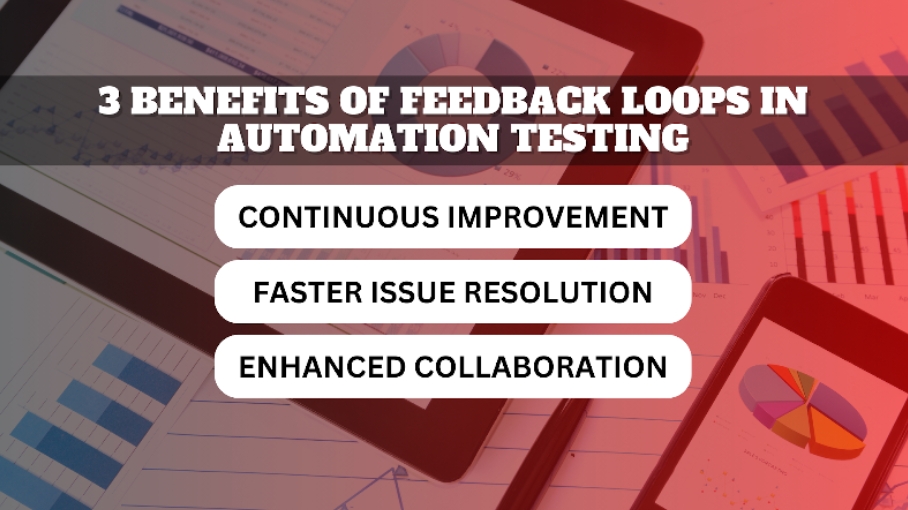Automation testing has revolutionized software development by making testing procedures faster and more effective. However, proper reporting practices significantly enhance the effectiveness of automation testing by providing clear, comprehensive, and actionable insights that help in interpreting test results, identifying issues, and making informed decisions.
In this article, we’ll discuss best practices for automation testing reporting to help you maximize the value of your testing efforts. We’ll also share tips on using top automation tools, including free software, to enhance your testing processes.
Clear objectives defined for your reports
Before diving into automation testing, clearly define your reporting objectives. What do you want to achieve with your reports? Are they intended to track progress, identify bugs, or provide insights for future improvements? Understanding these goals will help you design relevant and useful reports.
Choosing the Right Automation Tools
Choosing the right automation testing tools is crucial for effective reporting. With so many options available, including comprehensive packages like Selenium and QTP, as well as tools specifically designed for mobile and performance testing, it’s important to select those that align with your specific needs.
Among the variety of test automation reporting tools, you’ll find solutions that cater to different budgets, including free tools that still offer robust capabilities. By carefully matching the right tools to your testing and reporting requirements, you can ensure accurate and actionable insights from your testing efforts.
Integrate the Reporting Tools with Your Automation Framework
Integrating automation testing with reporting tools is essential. These tools should be integrated with your test automation framework to streamline reporting and ensure no data is missed. Allure, TestNG, and ExtentReports are widely used tools for enhancing the reporting of automated software testing.
Standardize Your Reporting Format
Consistency is crucial for any automation testing report. It ensures that everyone can easily read and understand your reports. Whether generated from automated software testing tools or manual testing procedures, reports should adhere to a standard format, including test cases, results, logs, screenshots, and summary statistics.
Emphasize Clarity and Simplicity
Reports should be clear and straightforward, avoiding jargon or overly technical language. The information should be accessible to all team members, even those who are not very technical. Most automated testing solutions allow for report customization, enabling you to present meaningful findings concisely.
Include Relevant Metrics
Metrics are the foundation of any automation testing report. KPIs such as test coverage, pass/fail rates, execution time, and defect density indicate the effectiveness of your testing efforts. If you’re using top automation tools, ensure these metrics are tracked and reported comprehensively.
Use Visuals for Better Understanding
Charts, graphs, and screenshots significantly enhance the readability of your reports. They provide a snapshot of test result trends and outliers at a glance. Most test automation tools simplify the generation of such visuals, either through built-in features or third-party solutions, to present data in an easily digestible format.
Real-Time Reporting
Real-time reporting is essential in fast-paced development environments. Automated tests should provide real-time feedback on the software’s status, allowing teams to address issues promptly.
Continuous integration pipelines can be established using tools like Jenkins and Bamboo, integrated with automation testing tools to support real-time reporting.
Automate Report Generation
Manually generating reports is time-consuming and prone to errors. Automating report generation ensures accuracy and saves significant time. Most automated software testing tools include features for scheduling and automating report generation, ensuring current project information is promptly delivered to stakeholders.
Incorporate Feedback Loops
Feedback is another important part in testing software for continuous improvement. Integrate feedback loops into the reporting process with frequent review of reports and action items with your team, highlighting improvements that can be made.
Automated testing services help you set up mechanisms to easily capture feedback from the reports and act on them in refining your strategies for testing.

Prioritize Actionable Insights
Reports should not just report data but provide meaningful action items in the reports. Highlight the key problems that need to be addressed, together with the steps that need to be addressed. If you are using any automation tools for testing, ensure that analysis and context are a part of your reports so all stakeholders can understand what your findings mean.
Use Customizable Dashboards
Customizable dashboards allow you to tailor reports according to the needs of different stakeholders. Whether it is for a developer, manager, or client, a customizable dashboard will show all the relevant data in a very easily digestible format.
Good software automated testing tools provide dashboard features that can be adjusted to display the data most relevant to each audience.
Include Regression Testing Reports
This is an essential step to ensure that new code changes do not impact the existing functionality. It is imperative that automated testing solutions include comprehensive regression testing reports that track performance for previously tested features after new updates. These reports have immense contributions towards the sustenance of quality in software over time.
Fully utilize AI and ML for Enriched Reporting
Increased integration of AI and machine learning into automated software testing tools is going to revolutionize the way reports are generated and analyzed. This sort of technology identifies patterns, predicts problems, and offers insights at a deeper level into the test results.
Because this is only the tip of the iceberg for automation tools in the realm of software testing, using AI-driven features can help you have a competitive edge in your reporting practices.
Assure Compliance to the Industry Standards
Depending on the industry, there will be some standards and regulations that your test reports should adhere to. For instance, in the field of health or finance, the reports may need to comply with regulations that impose guidelines on the security of data and accuracy. See to it that your automated testing service and reporting processes are aligned with such requirements.
Conclusion
Automation testing reporting is the most integral part of any successful software testing strategy. By implementing those best practices, you ensure that your reports are clear, comprehensive, and actionable, providing relevant insights into the process of continuous improvement.
Be it the best free automation software or seeking investment in some advanced test automation tools, the right approach toward reporting itself can make a hell of a lot of difference in functionality delivery for all your testing efforts.
Embrace these practices to raise collaboration, ease your decision-making process, and realize higher-quality software.
FAQs
- What are automation tools, and why are they important in software testing?
Automation tools automate the testing process, decreasing manual effort and increasing accuracy by automating oft-repeated testing tasks.
- How often should the Automation Testing tools be updated and maintained?
Automation testing tools themselves should be continuously updated and maintained to keep them at par with the latest standards and features of software testing.
- How can one make automation testing reports more actionable?
Automation testing reports could be more actionable if they include insightful, prioritized, and recommended improvements according to the test results.
Stay in touch to get more news & updates on Webofbuzz!




